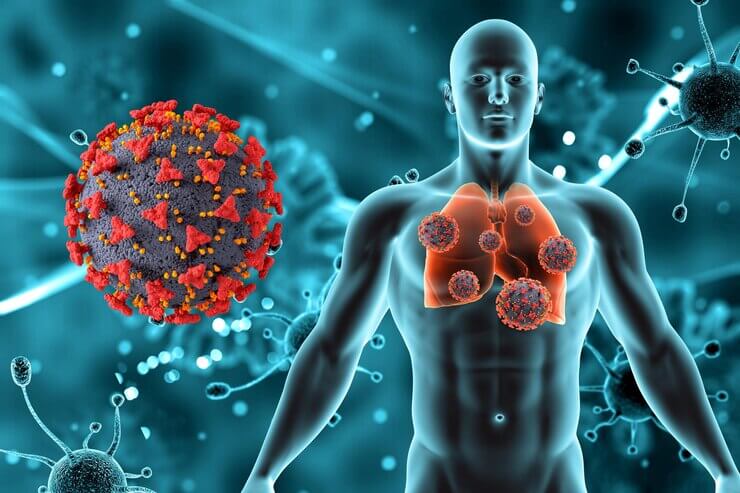
Understanding Human Metapneumovirus Infection (HMV)
Human Metapneumovirus (HMV) is an often-overlooked respiratory virus that can cause significant illness, particularly in young children, the elderly, and individuals with weakened immune systems. While it shares similarities with other respiratory viruses such as respiratory syncytial virus (RSV) and influenza, HMV has distinct characteristics and deserves attention as a public health concern. This article delves into the nature of HMV, its symptoms, transmission, diagnosis, treatment, and prevention.
What is Human Metapneumovirus?
Discovered in 2001, Human Metapneumovirus belongs to the Pneumoviridae family, which also includes RSV. HMV primarily infects the respiratory tract and is responsible for a significant number of respiratory illnesses worldwide. Though it affects individuals of all ages, young children and older adults are particularly vulnerable to severe infections.
HMV has a seasonal pattern, with infections peaking during the late winter and early spring in temperate climates. It is estimated that nearly everyone is exposed to HMV by the age of five, and reinfections can occur throughout life.
The symptoms of HMV infection can vary depending on the age and overall health of the individual. In most cases, symptoms are mild and resemble those of a common cold. However, severe cases can lead to complications such as pneumonia or bronchiolitis. Common symptoms include:
- Fever
- Cough
- Runny or stuffy nose
- Shortness of breath
- Sore throat
- Wheezing
- Fatigue
In young children, HMV can cause severe lower respiratory tract infections, resulting in symptoms like difficulty breathing, wheezing, and cyanosis (bluish skin due to lack of oxygen). In older adults and those with compromised immune systems, HMV can exacerbate pre-existing respiratory or cardiac conditions.
How is HMV Transmitted?
Human Metapneumovirus spreads through respiratory droplets when an infected person coughs or sneezes. It can also be transmitted via direct contact with contaminated surfaces or objects, followed by touching the nose, mouth, or eyes. The virus is highly contagious and can spread rapidly in crowded settings such as schools, daycare centers, and nursing homes.
Diagnosing HMV can be challenging as its symptoms overlap with those of other respiratory viruses. Physicians often rely on laboratory tests to confirm the presence of HMV, especially in severe or unusual cases. Common diagnostic methods include:
- Reverse Transcription Polymerase Chain Reaction (RT-PCR): This test detects the genetic material of the virus and is highly sensitive and specific.
- Antigen Detection Tests: These tests identify viral proteins and provide rapid results.
- Serology Tests: Used to detect antibodies against HMV, though these are less commonly employed in acute cases.
Treatment Options
Currently, there is no specific antiviral treatment for Human Metapneumovirus. Most cases are mild and resolve on their own with supportive care. Treatment focuses on alleviating symptoms and may include:
- Hydration: Drinking plenty of fluids to prevent dehydration.
- Fever and Pain Management: Over-the-counter medications like acetaminophen or ibuprofen can help reduce fever and relieve pain.
- Rest: Adequate rest supports the body’s immune response.
- Oxygen Therapy: In severe cases, oxygen supplementation may be required.
Hospitalization may be necessary for individuals with severe respiratory distress, especially infants and those with underlying health conditions.
Preventing HMV Infection
Prevention plays a crucial role in reducing the spread of Human Metapneumovirus. While there is no vaccine available for HMV, adopting good hygiene practices can significantly lower the risk of infection. Key preventive measures include:
- Frequent Handwashing: Wash hands thoroughly with soap and water for at least 20 seconds.
- Avoid Close Contact: Stay away from individuals who are sick and avoid close contact if you are ill.
- Disinfect Surfaces: Regularly clean and disinfect frequently touched surfaces such as doorknobs, toys, and electronics.
- Use Tissues: Cover your mouth and nose with a tissue or elbow when coughing or sneezing, and dispose of tissues promptly.
- Stay Home When Sick: Limit interactions with others if you are unwell to prevent spreading the virus.
HMV and Public Health
While HMV often flies under the radar compared to other respiratory viruses, it is a significant contributor to respiratory illnesses, especially in vulnerable populations. Public health initiatives focusing on awareness, early diagnosis, and preventive measures can help mitigate its impact. Research into vaccine development and antiviral treatments is ongoing and holds promise for future advancements.
Conclusion
Human Metapneumovirus is a common yet underestimated respiratory virus that can cause a range of illnesses from mild colds to severe respiratory complications. By understanding its symptoms, transmission, and prevention strategies, individuals and healthcare providers can better manage and reduce the burden of HMV infections. Continued research and public health efforts are essential to address this important health concern and improve outcomes for those most at risk.


